Kia EV3 vs Renault Kangoo – Which model is better for everyday use?
Everyday use, family trips or long-distance drives – here’s where the differences show.
Discover whether Kia EV3 or Renault Kangoo fits your lifestyle better.
Costs and Efficiency: When it comes to price and running costs, the biggest differences usually appear. This is often where you see which car fits your budget better in the long run.
Renault Kangoo has a evident advantage in terms of price – it starts at 23100 £, while the Kia EV3 costs 30800 £. That’s a price difference of around 7791 £.
In terms of energy consumption, the advantage goes to the Kia EV3: with 14.90 kWh per 100 km, it’s evident more efficient than the Renault Kangoo with 20.20 kWh. That’s a difference of about 5.30 kWh.
As for range, the Kia EV3 performs clearly better – achieving up to 605 km, about 320 km more than the Renault Kangoo.
Engine and Performance: Under the bonnet, it becomes clear which model is tuned for sportiness and which one takes the lead when you hit the accelerator.
When it comes to engine power, the Kia EV3 has a noticeable edge – offering 204 HP compared to 130 HP. That’s roughly 74 HP more horsepower.
In acceleration from 0 to 100 km/h, the Kia EV3 is decisively quicker – completing the sprint in 7.50 s, while the Renault Kangoo takes 11.60 s. That’s about 4.10 s faster.
In terms of top speed, the Renault Kangoo performs minimal better – reaching 184 km/h, while the Kia EV3 tops out at 170 km/h. The difference is around 14 km/h.
There’s also a difference in torque: Kia EV3 pulls barely noticeable stronger with 283 Nm compared to 270 Nm. That’s about 13 Nm difference.
Space and Everyday Use: Whether family car or daily driver – which one offers more room, flexibility and comfort?
Seats: Renault Kangoo offers distinct more seating capacity – 7 vs 5.
In curb weight, Renault Kangoo is a bit lighter – 1585 kg compared to 1800 kg. The difference is around 215 kg.
In terms of boot space, the Renault Kangoo offers clearly more room – 950 L compared to 460 L. That’s a difference of about 490 L.
In maximum load capacity, the Renault Kangoo performs decisively better – up to 3050 L, which is about 1799 L more than the Kia EV3.
When it comes to payload, Renault Kangoo noticeable takes the win – 609 kg compared to 470 kg. That’s a difference of about 139 kg.
Who wins the race?
The Kia EV3 proves to be has a very small edge and therefore becomes our DriveDuel Champion!
Kia EV3 is the better all-rounder in this comparison.
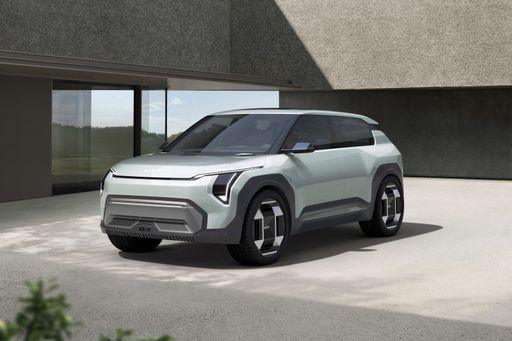
Kia EV3
Kia EV3
The Kia EV3 is a testament to innovative design and sustainable driving, featuring a sleek exterior that melds form with function. Inside, the cabin offers a harmonious blend of modern technology and comfort, making every journey enjoyable for both driver and passengers. With its impressive range and eco-friendly credentials, the EV3 positions itself as a competitive player in the evolving landscape of electric vehicles.
details @ kiamedia.com
@ kiamedia.com
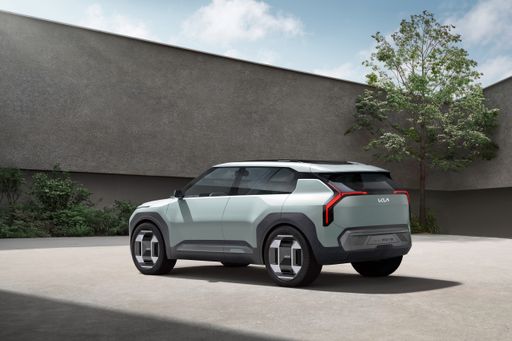 @ kiamedia.com
@ kiamedia.com
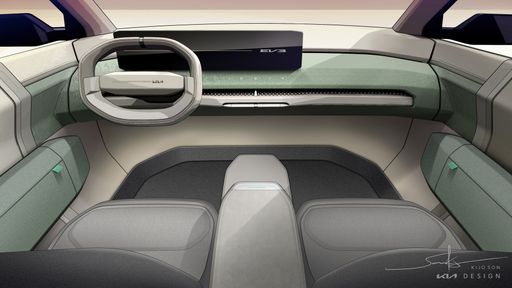 @ kiamedia.com
@ kiamedia.com
Renault Kangoo
The Renault Kangoo high-roof van delivers a practical and versatile solution for both family and commercial use, with its spacious interior and adaptable seating arrangements. Its modern design and user-friendly features provide comfort and convenience, making it an appealing option for those needing a reliable workhorse. Additionally, the efficient engine options ensure a balanced approach to performance, keeping running costs manageable for everyday driving.
details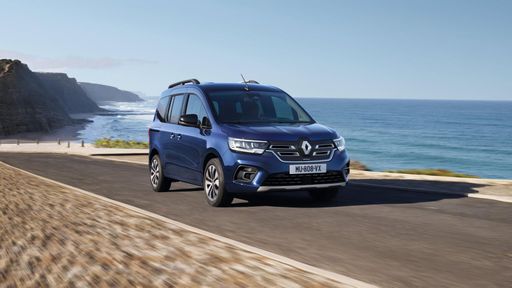 @ Renault
@ Renault
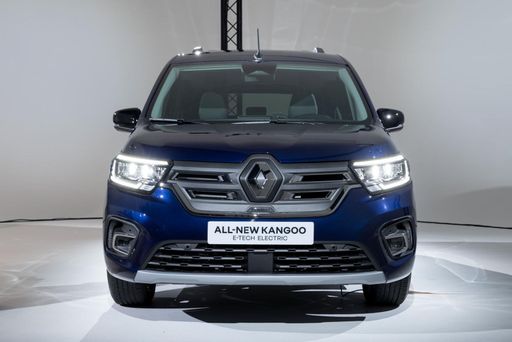 @ Renault
@ Renault
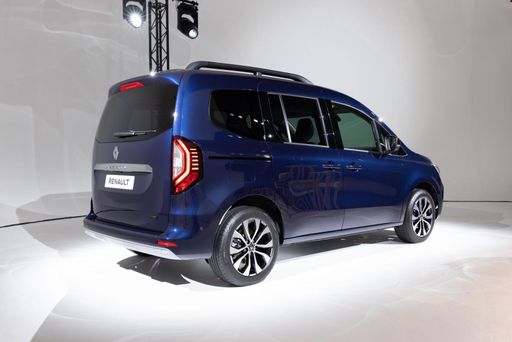 @ Renault
@ Renault
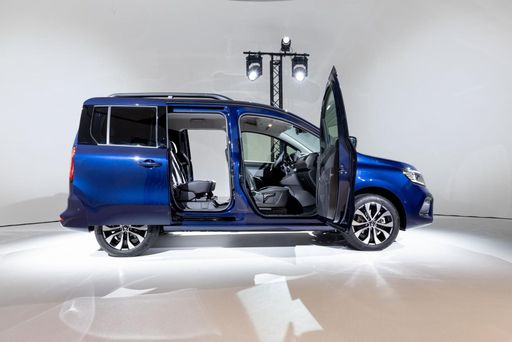 @ Renault
@ Renault
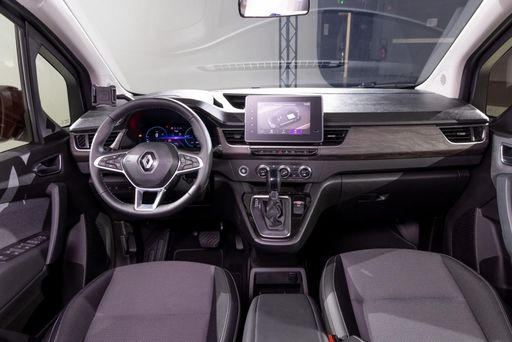 @ Renault
@ Renault
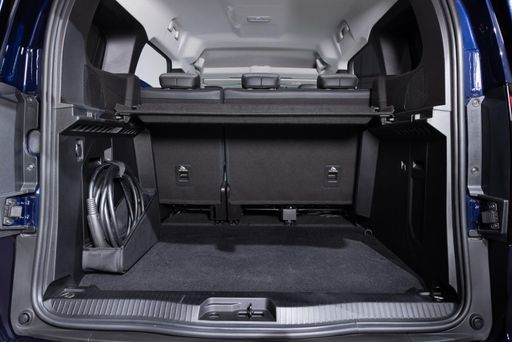 @ Renault
@ Renault

|

|
|
|
|
Costs and Consumption |
|
|---|---|
|
Price
30800 - 41700 £
|
Price
23100 - 36200 £
|
|
Consumption L/100km
-
|
Consumption L/100km
5.2 - 7.1 L
|
|
Consumption kWh/100km
14.9 - 16.2 kWh
|
Consumption kWh/100km
20.2 - 21.5 kWh
|
|
Electric Range
436 - 605 km
|
Electric Range
278 - 285 km
|
|
Battery Capacity
58.3 - 81.4 kWh
|
Battery Capacity
-
|
|
co2
0 g/km
|
co2
0 - 161 g/km
|
|
Fuel tank capacity
-
|
Fuel tank capacity
54 L
|
Dimensions and Body |
|
|---|---|
|
Body Type
SUV
|
Body Type
High Roof Estate
|
|
Seats
5
|
Seats
5 - 7
|
|
Doors
5
|
Doors
5
|
|
Curb weight
1800 - 1885 kg
|
Curb weight
1585 - 2041 kg
|
|
Trunk capacity
460 L
|
Trunk capacity
500 - 950 L
|
|
Length
4300 - 4310 mm
|
Length
4486 - 4911 mm
|
|
Width
1850 mm
|
Width
1860 - 1919 mm
|
|
Height
1560 - 1570 mm
|
Height
1838 - 1869 mm
|
|
Max trunk capacity
1251 L
|
Max trunk capacity
1296 - 3050 L
|
|
Payload
470 kg
|
Payload
400 - 609 kg
|
Engine and Performance |
|
|---|---|
|
Engine Type
Electric
|
Engine Type
Diesel, Petrol, Electric
|
|
Transmission
Automatic
|
Transmission
Manuel, Automatic
|
|
Transmission Detail
Reduction Gearbox
|
Transmission Detail
Manual Gearbox, Dual-Clutch Automatic, Reduction Gearbox
|
|
Drive Type
Front-Wheel Drive
|
Drive Type
Front-Wheel Drive
|
|
Power HP
204 HP
|
Power HP
95 - 130 HP
|
|
Acceleration 0-100km/h
7.5 - 7.9 s
|
Acceleration 0-100km/h
11.6 - 15.6 s
|
|
Max Speed
170 km/h
|
Max Speed
130 - 184 km/h
|
|
Torque
283 Nm
|
Torque
200 - 270 Nm
|
|
Number of Cylinders
-
|
Number of Cylinders
4
|
|
Power kW
150 kW
|
Power kW
70 - 96 kW
|
|
Engine capacity
-
|
Engine capacity
1332 - 1461 cm3
|
General |
|
|---|---|
|
Model Year
2024
|
Model Year
2022 - 2024
|
|
CO2 Efficiency Class
A
|
CO2 Efficiency Class
E, F, D, A
|
|
Brand
Kia
|
Brand
Renault
|
What drive types are available for the Kia EV3?
The Kia EV3 is offered with Front-Wheel Drive.
The prices and data displayed are estimates based on German list prices and may vary by country. This information is not legally binding.
